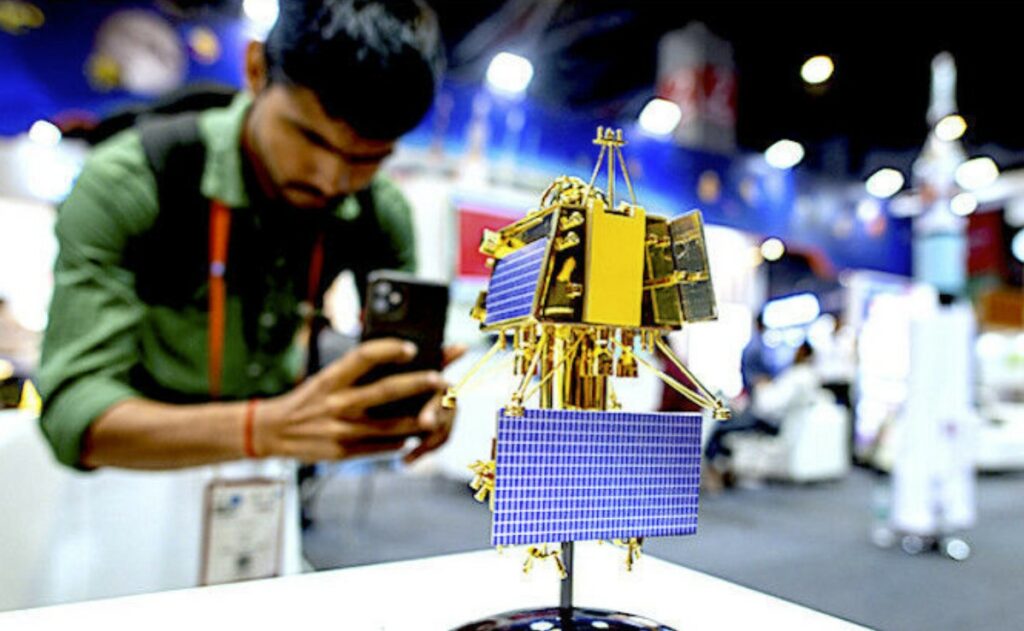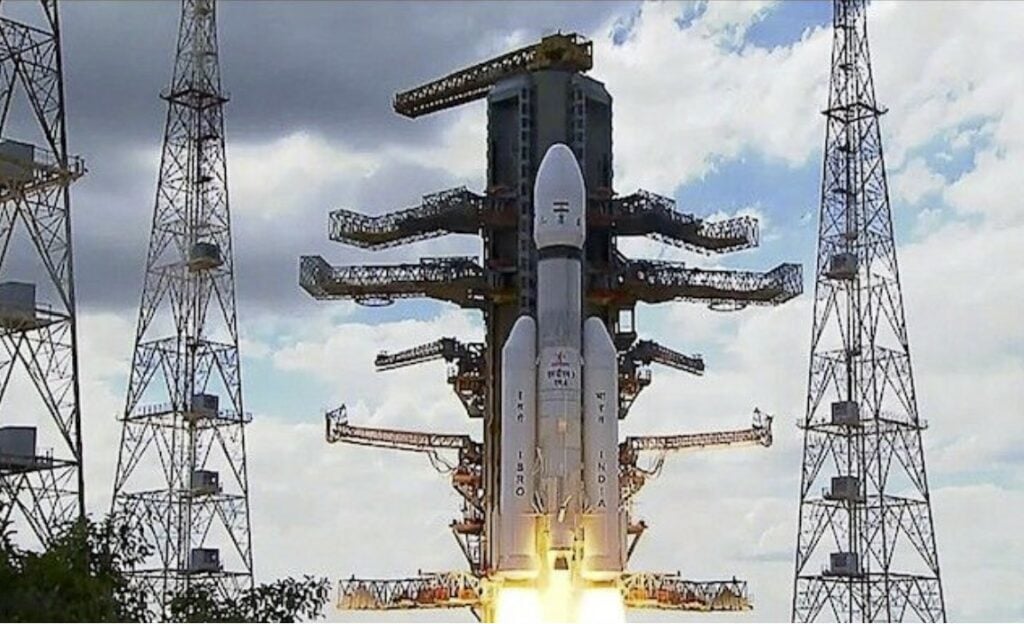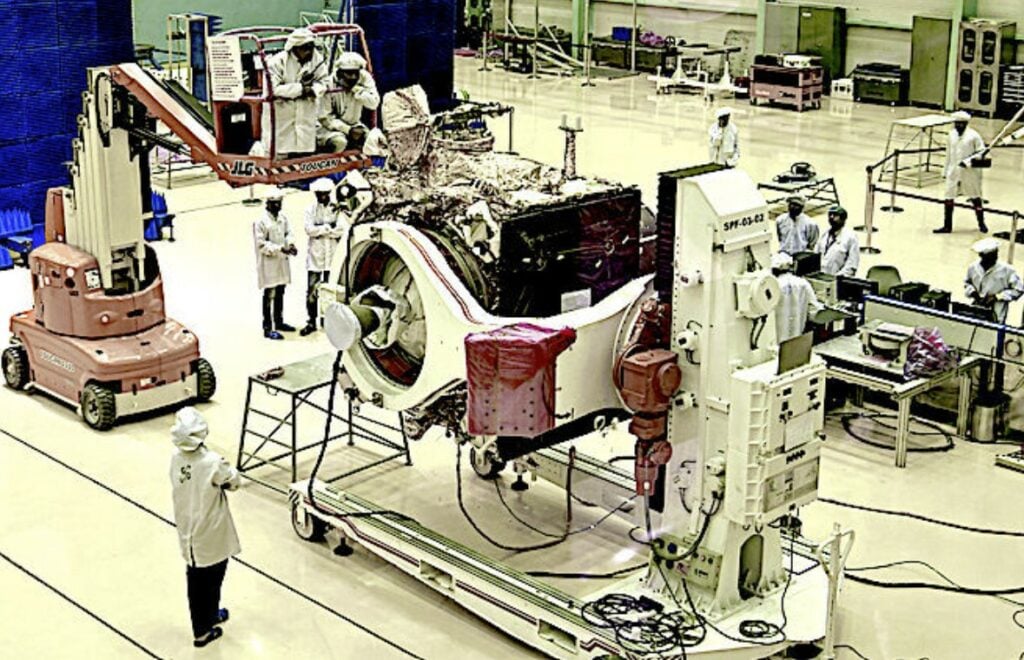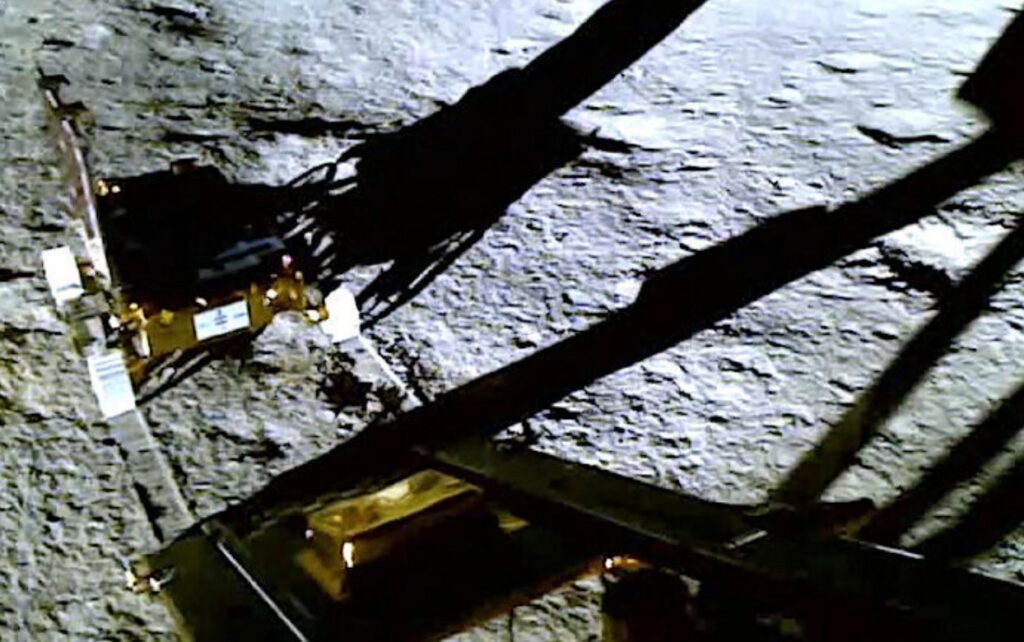While the US is discussing the possible use of nuclear energy for coming space mission. A country (and probably more than one) is already doing it: India…

New Delhi is experimenting with radioisotopes to charge its robotic missions to the Moon, Mars and beyond…
Indians are ecstatic over their space program’s string of successes in recent months. The Indian Space Research Organization (ISRO) has a couple of well-kept tech secrets – one of them nuclear – that will drive future voyages to the cosmos.
In the Hollywood sci-fi movie ‘The Martian’, astronaut Mark Watney, played by Matt Damon, is presumed dead and finds ways to stay alive on the red planet, mainly thanks to a big box of Plutonium known as a Radioisotope Thermoelectric Generator (RTG).
In the film, Watney uses it to travel in his rover to the ‘Pathfinder’, a robotic spacecraft which launched decades ago, to use its antenna to communicate with his NASA colleagues and tell them he’s still alive. Additionally, the astronaut dips this box into a container of water to thaw it.
In real life, the RTG generates electricity from the heat of a decaying radioactive substance, in this case, Plutonium-238. This unique material emits steady heat due to its natural radioactive decay. Its continuous radiation of heat, often lasting decades, made it the material of choice for producing electrical power onboard several deep-space missions of the erstwhile USSR and the US.
For short-duration voyages, Soviet missions used other isotopes, such as a Polonium-210 heat source in the Lunokhod lunar rovers, two of which landed on the Moon, in 1970 and 1973.
NASA has employed Plutonium-238 to produce electricity for a wide variety of spacecraft and hardware, from the science experiments deployed on the Moon by the Apollo astronauts to durable robotic explorers, such as the Curiosity Mars rover and the Voyager 1 and 2 spacecraft, which are now at the edge of the solar system.
The ISRO first used nuclear fuel to keep the instruments and sensors going amid frigid conditions during a successful lunar mission, Chandrayaan-3. A pellet or two of Plutonium-238 inside a scaled-down version of the RTG known as the radioisotope heating unit (RHU) made its way to space aboard the rocket. It was provided by India’s atomic energy experts.
RHUs are similar to RTGs but smaller. They weigh 40 grams and provide about one watt of heat each. Their ability to do so is derived from the decay of a few grams of Plutonium-238. However, other radioactive isotopes could be used by today’s space explorers. RHUs and RTGs feature rugged, heat-resistant casings to safely contain the radioisotope in case of a launch or re-entry vehicle failure.

The RHU employed by ISRO, according to Palanivel Veeramuthuvel, project director of India’s latest lunar mission Chandrayaan-3, will be a key technology in the future as the space agency plans not only more exploratory trips to the Moon and Mars but also Venus and the exoplanets, i.e. planets outside the solar system.
The RHUs installed in spacecraft keep components at operational temperatures that may differ significantly within a spacecraft. In the vacuum of space, any part of the spacecraft that doesn’t receive direct sunlight will cool down so much that electronics or delicate scientific instruments break down. RHUs are simpler and more reliable than other ways of keeping components warm, such as electric heaters.
Like miniature fireplaces, RHUs will produce the small amount of heat essential for the instruments and sensors to tick in places where sunlight and solar energy could get scarce.
Palanivel told RT:
“As one (probe) goes farther from the Sun, or during lunar nights (when the temperature dips below minus 170 degrees on the Moon’s soil), the RHUs will keep everything warm by producing a small amount of heat. They will help reduce dependence on solar energy (sunlight used to generate power from the solar panels).”
Besides providing a reliable power supply, they also help shrink the weight and mass of such probes by eliminating big solar panels. For example, the International Space Station’s (ISS) solar panels weigh a whopping 2,400 pounds and are 115 feet long and 39 feet wide. ISRO’s satellites from the multiple-purpose INSAT series have solar panels that total 230 square feet when deployed in space; the remote sensing satellites (Indian Remote Sensing or IRS) occupy 290 square feet of space.
With the cost of launching one kilogram payload into space at $10,000 and solar panels becoming ineffective during deep space missions (reflecting a decline in the availability of sunlight to power instruments and electronic components), the role of RHUs (each weighing only 40 grams) is critical when ISRO plans to put a lander on Mars, or for exploration of Venus.
Russia had offered radioisotope heating units for Chandrayaan-2, the probe launched in 2019 which was initially planned as a two-nation collaborative outing to the Moon, said Dr Mylswamy Annadurai, former director at the U R Rao Satellite Centre in Bengaluru. He added that such a transfer did not occur as ISRO decided to make it a solo effort owing to differences over the lander-rover mission’s design. He said his colleagues at ISRO felt the weight could increase substantially when accepting the design suggested by Russian space scientists.
“Choosing between solar and nuclear power for a space mission has everything to do with where a spacecraft needs to operate and what the mission must accomplish when it gets there. Radioisotope power only enables or significantly enhances a mission’s ability to meet its science goals.”

Notwithstanding the difference of opinions regarding the Chandrayaan mission, space scientists from both countries continue to collaborate, including on the human space flight program ‘Gaganyaan’ which aims to send an Indian astronaut into space using an Indian-made rocket, likely in 2025. Four ace Indian Air Force (IAF) test pilots were sent to Russia in 2020 for training in facilities set up for those planned voyages into outer space.
Meanwhile, the Indian space agency has also kept under wraps two critical technologies developed for future missions by a Bengaluru-based space tech startup, Bellatrix Aerospace.
These unique propulsion systems – engines that utilize electricity instead of conventional chemical propellants onboard satellites – were tested in space aboard POEM-3 (PSLV Orbital Experimental Module-3), which was launched by PSLV on January 1, 2024. The crew also tried replacing hazardous Hydrazine with a non-toxic and environment-friendly, high-performing proprietary propellant.

Hydrazine, an inorganic compound that is used as a long-term storable propellant has been used in the past by various space agencies; even for thrusters on board NASA’s space shuttles. However, it poses a host of health hazards; engineers wear space suits to protect themselves while loading it before the launch of a satellite or a deep-space probe.
In 2017, the European Union recommended banning its use as a satellite fuel, prompting the European Space Agency (ESA) to research alternatives to Hydrazine. The US administration has proposed a ban on the use of Hydrazine to propel satellites in outer space by 2025.
ISRO sources said the engines must be tested in outer space; this would serve as the precursor to such propulsion systems, which would make them available to next-generation satellites worldwide. The potential customers could be from countries contemplating a ban on Hydrazine, or even ISRO for its next generation of satellites.
Hey friends, it’s time to wake up!
If a few more people choose to support my work, I could expose more lies, root out more corruption, and call out more hypocrites. So, if you can afford it, please support my endeavor by either using PAYPAL or the DonorBox below (PAYPAL & Credit Cards / Debit Cards accepted)…
If you are a crypto fanatic, I do now accept crypto donations:
BTC: 1AjhUJM6cy8yr2UrT67iGYWLQNmhr3cHef (Network: Bitcoin) USDT: 0x490fe5d79d044a11c66c013e5b71305af0a76c1b (Network: Etherum ERC20)
You should join my newsletter to get a daily compilation of different breaking news, pictures and videos… YOU WILL LOVE IT!
Thank you,
Manuel












